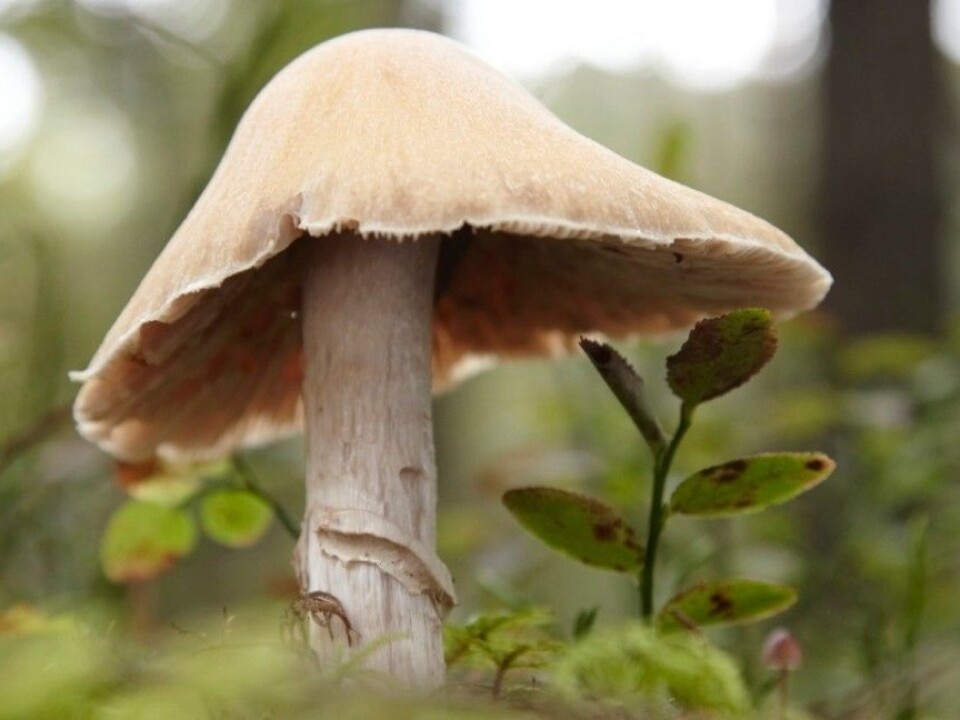
Surprisingly high levels of radioactivity in Norwegian reindeer and sheep
It has been almost 30 years since the Chernobyl nuclear disaster sprayed radioactive fallout across parts of Europe. Nevertheless, Norwegian officials have measured much higher levels of radioactive contamination than usual in grazing animals this autumn.
“This year is extreme,” says Lavrans Skuterud, a researcher at The Norwegian Radiation Protection Authority.
In September, a sample of reindeer from Vågå Reinlag AS in Jotunheimen contained 8,200 becquerels per kilogram of the radioactive substance cesium-137.
In September 2012, the maximum value at that location was 1,500 becquerels.
Measurements in sheep also showed high levels of radioactivity. In Valdres and Gudbrandsdal, both in central southern Norway, samples of mutton contained 4,500 becquerels per kilogram.
Lots of mushrooms

Skuterud is confident that he knows the reason.
“There have been quite a lot of mushrooms this year. The mushroom season has also been quite long. And the mushrooms have grown high in the mountains.”
The gypsy mushroom poses a particular problem. It is edible, and both humans and animals find it very tasty, but it can take up a lot of radioactivity.
Back to pasture
Reindeer herders in Vågå have sent between 800 and 900 animals back out to pasture after the measurements of radioactivity.

“The animals can probably be slaughtered this winter, when the levels of radioactivity tend to fall,” according to Skuterud. That does, however, mean lost revenue and extra costs.
In Valdres and Gudbrandsdal, many sheep are now being given special feed. They are fenced in and are being fed less contaminated feed before being slaughtered. In sheep and reindeer, the radioactive substance has a half-life of two to three weeks.
In Norway, the regulatory limit for sheep meat is 600 becquerels per kilogram.
A surprise
The researchers know why there is more radioactivity in the animals this year.
Yet they are somewhat surprised by the very high levels.
“The Chernobyl accident happened in 1986. That is almost 30 years ago,” Skuterud says.
The reactor at Chernobyl was designed to be inexpensive and efficient. Unfortunately, it was also inherently unstable, and one spring day in 1986, things went horribly wrong.
A half-life of 30 years
Cesium-137 has a half-life of 30 years. In about two years, half of the radioactive dust that blew in over Norway after the dramatic spring night in 1986 should be gone.
“The level in the environment has fallen even faster. Some was washed out, and some was bound in the soil. Only a small portion is in circulation in the food chain. When we look at the values in grazing animals, they rise in autumn, and it looks as if this will last forever. But when it comes to winter, values are in steady decline, at least in reindeer,” says Skuterud.
Measurements from the 1960s
The Norwegian Radiation Protection Authority began to measure radioactive cesium in reindeer herders as early as 1965. The measurements began in Kautokeino Sami, in very northern Norway as a result of the testing of nuclear weapons in the 1950s and 1960s.
Since Chernobyl, measurements have been carried out on herders in the areas that were hardest hit, namely Central and South Norway.
“Before Chernobyl, we never saw the levels we see today, even when the nuclear tests were at the most intense in the 1960s,” Skuterud says.
The tests were conducted at high altitudes. That spread the radioactivity instead of allowing it to concentrate in specific areas, which is what happened after Chernobyl.
Southern Sami hit hard
The Sami people in southern Norway are probably among the most radioactive in the world, according to Skuterud. However, the health effects of this situation are unknown.
“We would like to do health studies of this group. But it is a very small population, so the results are uncertain. But from what we know about the consequences of these radiation doses, we do not expect health effects,” Skuterud said.
Less cancer among the Sami
There have been studies of cancer incidence in the northern Sami population after the fallout in the 1950s and 1960s.
The Sami population turned out to have significantly lower cancer rates than the general population. This is probably due to a healthier lifestyle, according to Skuterud.
“They are more physically active and eat a lot of reindeer meat, which is lean and healthy. They also eat a lot of fish and berries.”
Still, this does not give us any answers when it comes to the long-term effects of the fallout, the researcher says.
Since Chernobyl, there have been strong advisories about the amount of reindeer meat that can safely be eaten per day. The Sami have been very conscious of the dangers of radioactivity.
Large differences
Officials in different countries have imposed regulatory thresholds on cesium-137 in food as a way to keep track of the annual consumption of food containing the substance. However, these limits vary greatly from country to country.
There is consensus that people should not be exposed to more than 800,000 becquerels per year. The disagreement centres on differences in diet and the number of foods that are contaminated.
“Following the nuclear accident in Fukushima in Japan in 2011, the issue has re-emerged. Today, there is a considerable amount of research on it,” Skuterud explains.
Norway has very liberal thresholds compared to those in Japan.
The threshold for common foodstuffs is 600 becquerels per kilogram, but only 100 becquerels in Japan.
For foods that are eaten more rarely, such as game and freshwater fish, the Japanese threshold is 500 and the Norwegian 3000.
A question of politics
In Norway, the high threshold was discussed after the Chernobyl accident, and ultimately the decision was political, says Skuterud.
“The threshold for this category was kept high because indigenous people lived by herding. They were in danger of losing their livelihood. That could lead to more serious health problems than the radioactivity,” he said.
------------
Read the Norwegian version of this article at forskning.no
Translated by: Lars Nygaard






























